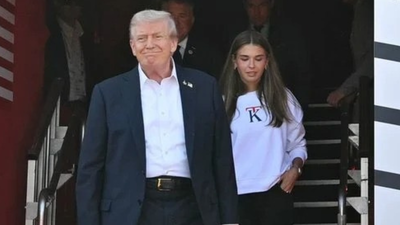Hybrid for juniors, classroom for seniors: Teachers and principals debate Delhi’s AQI-driven divide

The Air Quality Index (AQI) in Delhi surged from 362 on Monday to 425 on Tuesday morning, leaving the city’s schools in a sudden dilemma. The Delhi government instructed all government, government-aided, and recognised private schools to implement hybrid learning for students up to Class 5. Senior classes, meanwhile, are to continue entirely in offline mode.The decision followed the Centre’s activation of Stage III anti-pollution measures under the Graded Response Action Plan (GRAP). To understand how this decision is being received, we sought opinions from school teachers and principals across the National Capital Region (NCR) and beyond. Their responses reveal a blend of support, concern, and caution.
Hybrid learning: A shield for the young
Hybrid learning allows younger children to attend classes both in person and online wherever feasible. The idea is to protect the most vulnerable while ensuring the learning process continues. Senior students, however, who have board examinations and practical assessments, are expected to remain in classrooms.Ritu Singh, Coordinator for Early Years at Ridge Valley School, Gurgaon, said the hybrid model “makes sense from a health and developmental standpoint”. She added that while younger children can adapt to short-term online classes, seniors need consistent in-person teaching for their board exams. Yet, she warned that the split approach highlights inequities in access and planning. “Schools need clear guidelines and digital support to ensure learning continuity for all grades,” she mentioned
Is a screen better than the schoolyard?
Anju Verma, Senior PGT English at DAV Pushpanjali, argued for a broader online shift. “Younger children need special consideration due to their immunity and developmental stage. But students in Classes VI to XII are also precious and must be protected from the surging AQI,” she said. Online classes for all, even if only for a few days, would safeguard health without major academic loss, she believes.
Challenges behind closed doors
Not everyone agreed. Dubbing the move to hybrid/offline classes “a flawed decision”, Aditi Misra, Principal, DPS Sector-45, Gurgaon, said, “Pollution affects everyone irrespective of age and cannot be treated as a problem only for older students.” She pointed out that younger children who stay home need constant supervision while attending online classes. “This is impossible when we have working parents.”Misra further noted that unsupervised time at home may undermine the intent of the restrictions. “When schools are open, children may step out for only 40–45 minutes, but when they stay home they often go out to play in their parks for unlimited periods of time defeating the purpose of the restrictions,” she added. What is needed, she stressed, is “a long-term, well thought-out policy to combat pollution.”
A middle path
Others, like Huda Ansari of Manav Mandir’s Smt NRP Sheth Multipurpose High School in Mumbai, see room for compromise. She called hybrid learning “a sensible balance” for younger students, while suggesting that senior classes could benefit from at least one online day per week. This, she argued, would protect health without halting learning.
The balance between health and education
The debate reveals a broader tension between health and academic priorities. Younger students are more vulnerable to pollution, yet senior students face critical examinations that may shape their future. Families, teachers, and school administrators need to navigate this delicate balance with limited time and infrastructure.As Delhi grapples with one of its worst air pollution spikes in years, the hybrid learning model may offer only a stopgap. Educators point out that the underlying issue remains unresolved. Without clear, long-term policies and robust digital and physical infrastructure, the city risks exposing children to avoidable health hazards year after year.In the end, one question remains: Should schooling decisions during extreme pollution be age-specific, or should the city adopt a uniform approach until the air clears? For now, the hybrid model stands as the uneasy compromise.





